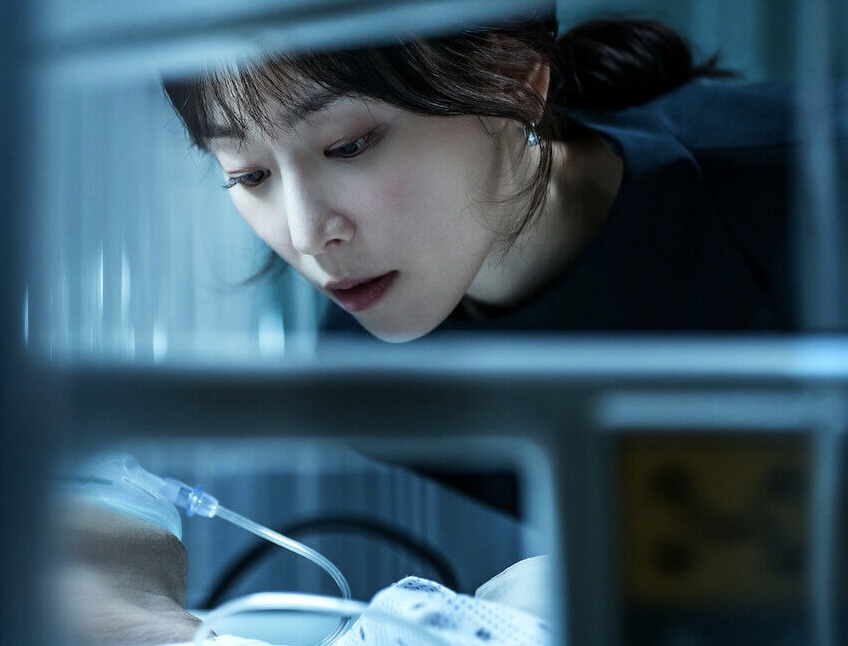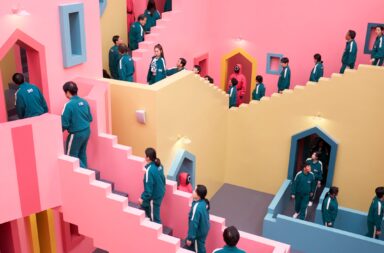
The Netflix drama miniseries The Trunk, based on a novel by Kim Ryeo-ryeong, begins with an outlandish premise. Han Jeong-won, played by Gong Yoo, is set up in a sort of test by his ex-wife Seo-yeon (Jung Youn-ha). Seo-yeon promises she will go back to him if he can endure one year in a contract marriage she arranges with Noh In-ji (Seo Hyun-jin), a professional wife with a marriage service company called NM. Contract marriage has been a common trope of dramas, usually highlighting how true love overcomes more cynical motivations for marriage.
The Trunk does not entirely avoid this trope, as the relationship between Jeong-won and In-ji moves from purely transactional to one with genuine chemistry and care. For much of its runtime, however, the drama is mostly interested in exploring unresolved trauma and how it manifests in self-destructive coping mechanisms, detachment from relationships, or power games and manipulation.
The series initially begins with fairly unlikable characters in toxic relationships. Jeong-won is an insomniac music producer who frequently takes drugs to sleep or escape visions of his abusive childhood. At the beginning, he is out of control, giving Seo-yeon a pair of earrings (even though she too has recently remarried) and smashing in her car window in rage when he sees its box in the back seat.
The show quickly establishes Seo-yeon, however, as a person who relishes attention, power, and control. With both her husbands, she offers or withholds affection depending on what suits her needs. She also seeks to punish Jeong-won for past wrongs and manipulate him into submission — in one moment, she gives him a vinyl record containing two objects: an image relating to someone the couple has lost, and three blue pills. She essentially tortures him with trauma from the past and enables his addiction, securing her role as the villain of the story even when it is revealed how she has suffered as well.
Slow and deliberate in its filmmaking, The Trunk takes its time to depict the psychological state of its leads through visual storytelling. In particular, the set design often reflects Jeong-won’s state of mind. His cold, sparsely furnished contemporary style mansion, the same home where he witnessed the abuse of his mother, reflects his inner demons. Details like wavy wooden slats in the bedroom evoke instability. The most prominent set piece is the glass chandelier, where his father planted surveillance cameras to spy on his mother, and which Seo-yeon replaces with her own imposing, nefarious tool for control. In his drug-addled states, Jeong-won envisions the chandelier moving. The show’s music and sound design further add to the psychological storytelling, matching the mood and emphasizing details like the clinking glass of the chandelier.

In-ji is also often seen returning to a particular space, the apartment belonging to her former fiance Do-ha. Following a scandal in which a sex tape with a male lover is exposed, Do-ha leaves. In-ji works for NM first out of revenge, then as a way to detach from the vulnerability that true emotional connection would bring. In her spare time, she maintains Do-ha’s apartment like a museum, feeding his fish.
Gong Yoo and Seo Hyun-jin’s acting ultimately elevates the drama — all the twisty plots and atmospheric filmmaking would not work without a believable human core. Gong brings nuance to his character, and one can see the sadness in his eyes even before we learn about his dark past. Seo effectively faces the challenge of playing an aloof character who represses her feelings in order to act as a “perfect wife.” Moments of warmth still come through In-ji’s facade, and Seo and Gong’s scenes together are enjoyable and convincing in their banter and slow-building relationship. With their connection in place, viewers can believe that Seong-won and In-ji would start to feel more hopeful and make more beneficial choices for themselves.
The show contains several subplots, with the major one surrounding Um Tae-seong (Kim Dong-won), who was detained for stalking In-ji, but prematurely released from a mental institution. The actor makes Tae-seong menacing, and his character brings some danger and suspense to the show, though the main intrigue remains among In-ji, Seong-won, and Seo-yeon. Ultimately, Tae-seong’s subplot serves as one more barrier In-ji has to emotional intimacy, yet it also reveals the depth of In-ji and Seong-won’s feelings for each other, with both characters making self-sacrificing choices to protect the other.

The mystery story is perhaps the least satisfying element, at least in a traditional sense. The titular trunk appears in the opening scene, foreshadowing that a murder has taken place. The show intercuts scenes of the police investigation into the main plot, eventually uncovering the victim halfway through the show, and finally the perpetrator. Viewers learn about the contents of the trunk as well, and the reveal may seem anticlimactic. The trunk, however, functions more like an object onto which characters project both fears and aspirations. Um Tae-seong believes the trunk contains documents that can expose NM‘s secret marriages to the public. For other characters, it represents psychological baggage they would prefer to hide away.
In many ways, The Trunk is an apt title for the miniseries: for both the characters and audience, the object does not fulfill expectations. Likewise, as viewers, we do not necessarily get the mystery thriller the opening scene promises, nor the typical romantic ending common to contract marriage stories. The drama’s strength is not its fairly fragmented and convoluted plot, but rather its convincing presentation of people with lingering trauma who gradually find healing and closure.
(YouTube. Images via Netflix).



